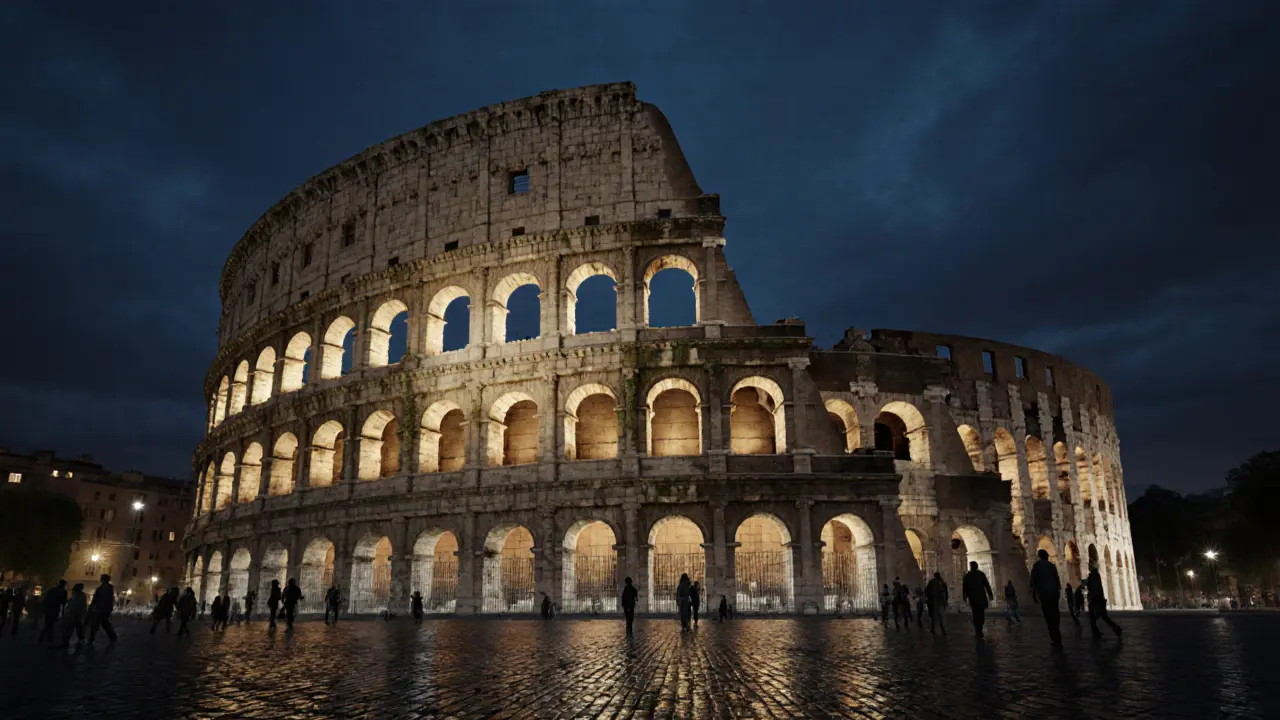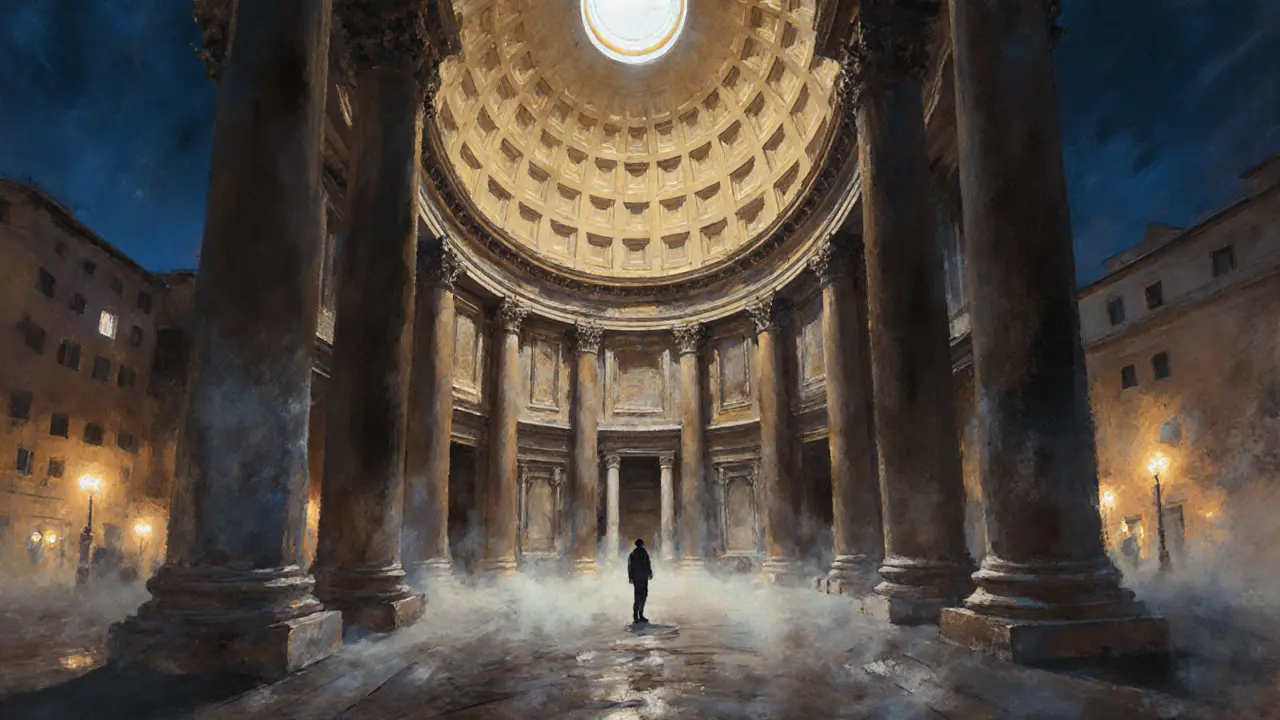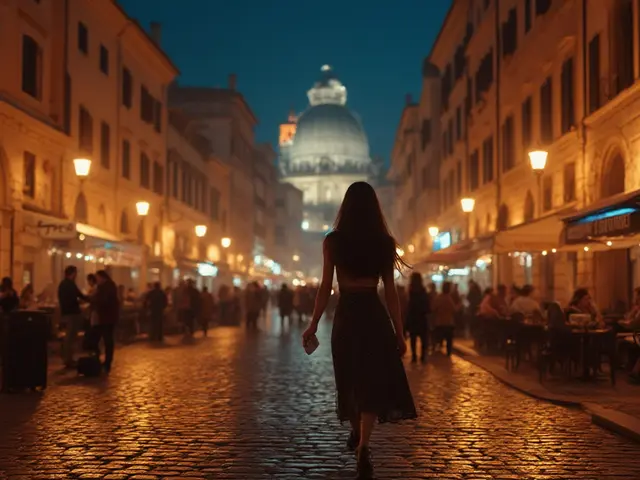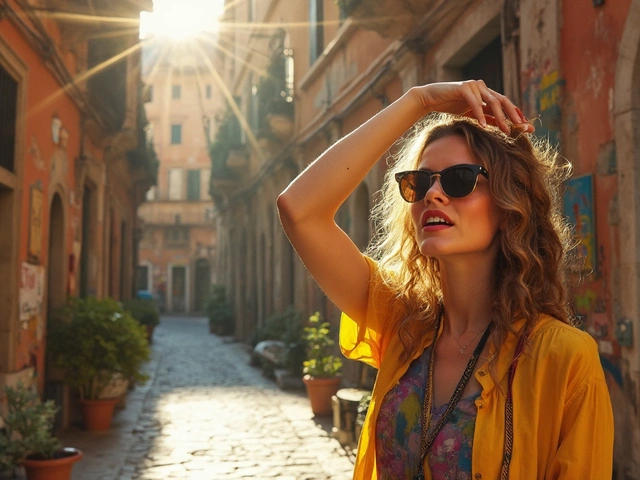
Rome doesn’t sleep when the sun goes down-it transforms. The same cobblestone streets that buzz with tourists by day become quieter, softer, and more magical after dark. The Colosseum glows under golden lights, the Trevi Fountain sparkles like liquid silver, and the scent of fresh espresso mixes with the faint smell of Roman pizza baking in alleyway ovens. This isn’t just a city that stays awake at night; it’s one that puts on a show.
Walk the Historic Center After Dark
The heart of Rome-Piazza Navona, Campo de’ Fiori, the Pantheon-isn’t just for daytime photos. At night, these places shed their crowds and take on a different soul. The Pantheon’s dome, lit from within, looks like a celestial portal. Walk around it slowly. Notice how the shadows stretch across the ancient columns. No one’s rushing. You can stand under the oculus and feel the cool night air drift down from the sky.
Don’t skip Piazza Navona. By 9 p.m., the street artists and vendors are gone. The fountains-Bernini’s Fontana dei Quattro Fiumi-keep flowing, their water catching the warm glow of lanterns. Sit on the stone edge. Order a small glass of local wine from a nearby bar. Watch the couples stroll, the occasional busker play a soft melody. It’s not loud. It’s not flashy. But it’s real.
See the Vatican at Night
Most people visit the Vatican Museums during the day, when lines stretch for blocks and the Sistine Chapel feels packed with selfie sticks. But there’s a quieter, more powerful way: a nighttime tour. These limited-entry tours run on select evenings, usually Wednesday and Friday. You walk through the empty halls, past Raphael’s rooms and ancient statues, with only a handful of others around. The Sistine Chapel, usually packed, becomes a sacred space again. Michelangelo’s ceiling doesn’t just look beautiful-it feels alive. The silence lets you hear your own breath.
These tours sell out fast. Book at least two weeks ahead through the official Vatican website. Don’t trust third-party sellers-they often charge double and don’t guarantee access. The tour lasts about 2.5 hours. Wear comfortable shoes. Bring a light jacket. The museums are chilly, even in summer.
Drink at a Rooftop Bar with a View
Rome has dozens of rooftop bars, but only a few offer the kind of view that makes you pause mid-sip. Amano on the Janiculum Hill is one. It’s not the fanciest, but it’s the most honest. You get a 360-degree panorama of the city: the dome of St. Peter’s, the tower of the Capitoline, the red rooftops stretching to the horizon. A gin and tonic here costs €12, but you’re paying for the sky, not the alcohol.
For something more refined, try Terrazza del Pincio near Piazza del Popolo. The terrace opens at dusk. The lights of the city come on one by one. It’s romantic without being cheesy. The crowd is mostly locals and thoughtful travelers-not partygoers. No loud music. Just the hum of the city below.

Try a Nighttime Food Tour
Rome’s food scene doesn’t shut down at 10 p.m. In fact, some of the best bites happen after dark. Join a guided food walk that starts around 7:30 p.m. and ends near midnight. You’ll hit places most tourists never find: a tiny trattoria in Trastevere that serves porchetta sandwiches straight from the oven, a family-run gelateria that makes ricotta and fig flavor only after 8 p.m., a hidden wine bar where the owner pours you a glass of Cesanese del Piglio from his own vineyard.
These tours aren’t about eating a lot-they’re about tasting deeply. You’ll try seven or eight small items, each with a story. The guide doesn’t just point out dishes-they tell you why the cheese is aged in a cave under the Appian Way, or why the olive oil comes from a single grove near Tivoli. It’s food as history, served warm.
Stroll Along the Tiber River
By night, the Tiber becomes a quiet ribbon of light. Walk from Ponte Sisto to Ponte Sant’Angelo. The bridges are lit with soft yellow lamps. The water reflects the buildings like a mirror. You’ll pass street musicians playing Neapolitan songs, couples sitting on the banks with a bottle of wine, and old men playing chess under the trees.
Stop at Ponte Sant’Angelo. The statues of angels lining the bridge are carved from white marble and glow in the dark. Each one holds a symbol of Christ’s passion. It’s eerie. It’s beautiful. It’s the kind of place that makes you think about time-how Rome has seen emperors, popes, revolutionaries, and tourists, and still, the angels stand watch.
Catch a Movie Under the Stars
Every summer, Rome turns its ancient ruins into open-air cinemas. The most famous is Cinema dell’Ara Coeli, tucked behind the Capitoline Museums. You sit on cushions under the stars, watching classic Italian films or Hollywood hits. The screen is set up right in front of the ancient temple of Juno. The sound echoes off the stone walls. It’s not perfect acoustics-but it’s perfect atmosphere.
Bring a blanket. Arrive early to get a good spot. Tickets are €8. No reservations. It’s first come, first served. The show starts at dusk, around 9:30 p.m. in summer, earlier in spring and fall. Don’t expect popcorn with butter-just simple snacks from a nearby kiosk. This isn’t a theater. It’s a moment.

Explore the Jewish Ghetto After Dark
By day, the Jewish Ghetto is quiet, almost forgotten. But at night, it wakes up. The narrow streets fill with the smell of fried artichokes-carciofi alla giudia-fresh from the fryers. The synagogue glows with warm light. You’ll find small family-run restaurants serving traditional Roman-Jewish dishes: salted cod, sweet and sour eggplant, and babka for dessert.
Walk past the ancient walls. Look at the Hebrew inscriptions carved into the stones. This neighborhood survived the Inquisition, the Nazi occupation, and decades of neglect. Now, it’s alive again-not as a museum, but as a living community. Eat at Nonna Betta. No website. No menu. Just a handwritten note on the door: "Aperto fino a mezzanotte." Open until midnight.
Don’t Miss the Nighttime Light Shows
Every few months, Rome stages a temporary light projection on its most iconic buildings. In 2024, the Colosseum was covered in moving images of gladiators, lions, and Roman soldiers, synced to orchestral music. In 2025, the Pantheon was turned into a celestial map, showing constellations as they appeared in 100 AD.
These shows are free, but they’re not advertised widely. Check the official Rome tourism site (comune.roma.it) or follow @romatourism on Instagram. They usually run for 2-3 nights only. Arrive 30 minutes early. People start gathering by 8:30 p.m. Bring a chair if you want to sit. Don’t expect loud crowds-it’s more like a public meditation than a festival.
Why Rome at Night Feels Different
Rome isn’t just a city with attractions. It’s a place where time doesn’t move in a straight line. By day, you see the history. At night, you feel it. The lights don’t just illuminate-they reveal. The shadows don’t hide-they remember. You don’t need to go to five places to have a great night. One quiet walk, one perfect gelato, one silent moment under a lit dome-that’s enough.
Most visitors rush. They check off the Colosseum, the Vatican, the Trevi Fountain. But the real Rome? It’s the one you find when you stop rushing. When you sit on a bench. When you let the night tell you its story.
Is it safe to walk in Rome at night?
Yes, most central areas like the historic center, Trastevere, and the area around the Vatican are very safe at night. Stick to well-lit streets and avoid isolated alleys after midnight. Pickpockets are rare after dark, but always keep your bag closed and your phone tucked away. The biggest risk? Getting lost in the maze of narrow streets. Download an offline map or ask for directions at a bar-you’ll find locals happy to help.
What’s the best time to visit the Trevi Fountain at night?
Go between 9 p.m. and 11 p.m. The fountain is lit beautifully after dark, and the crowds thin out after 10. Avoid weekends if you want space. The water sparkles under the lights, and the statues look like they’re alive. Don’t toss coins with your left hand-that’s a myth. Just use your right hand, toss over your shoulder, and make your wish. It’s not magic. But it’s tradition.
Can I visit the Colosseum at night?
Yes, but only on guided night tours. These run on select evenings, usually once or twice a week. You can’t just walk in. Book through the official Colosseum website. The tour includes access to the underground chambers and the arena floor-areas closed to daytime visitors. The experience is quiet, atmospheric, and unforgettable. It’s worth the extra cost.
Are there any free nighttime activities in Rome?
Plenty. Walk the Tiber River. Stare at the Pantheon’s dome. Sit on the steps of Piazza Navona. Watch the angels on Ponte Sant’Angelo glow. Visit the Jewish Ghetto and smell the fried artichokes. Attend a free outdoor film screening in summer. All of these cost nothing. The magic isn’t in the price tag-it’s in the quiet moments you let yourself have.
What should I wear for a night out in Rome?
Comfortable shoes are non-negotiable. You’ll walk 5-10 miles. Layer your clothes-nights can be chilly, even in summer. A light jacket or scarf works. Avoid flip-flops. Romans dress casually but neatly. You don’t need a suit, but don’t show up in sweatpants either. A simple blouse, jeans, and a coat are perfect. Keep your look respectful if you’re visiting churches or religious sites.



